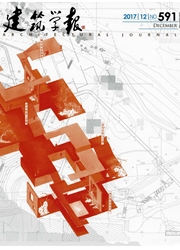

 中文摘要:
中文摘要:
公共空间供应系数研究的意义是在地块尺度上尝试建立量与质兼备、建筑室内外公共空间关联耦合的公共空间供应指标体系,并对现行的存量优化城市设计、开发与研究提供指导。文章首先在对公共空间供应系数讨论的基础上,提出了地块公共空间供应系数的相关指标;随后对上海6个轨交站域的14个混合功能地块进行了基于活动量的实证研究:最后对公共空间供应量在规划控制性指标层面上的有效性与实用性进行了校验与分析。研究得出的公共空间室内外比、公共空间容积率与其他一些相关指标,对规划控制实践来说在量与质方面都具有可参考性。
 英文摘要:
英文摘要:
The significance of the Public Space Supply Coefficient (PSSC) research lies in the possibility of developing a public space supply index system with a mutual supporting relationship between quality and quantity and coupling of architecture interior and exterior, to inspire the current inventory-optimization urban design, development, and relevant research. Firstly, based on the conception of Public Space Supply Coefficient, public space supply coefficient relevant indexes on block scale is proposed, then 14 mixed- used blocks of 6 Shanghai rail transit station (RTS) areas are analyzed by behavioral indicators empirically to testify its validity and practicability for planningpolicy. As a conclusion, Public Space Ratio of Interior and Exterior, Public Space Ratio, and relevant indexes are proved to be valid in various indicators, especially referable for controlling both quality and quantity of public space in practice.
 同期刊论文项目
同期刊论文项目
 同项目期刊论文
同项目期刊论文
 期刊信息
期刊信息
